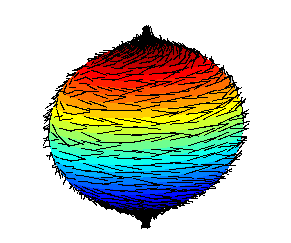Well, from a purely mathematical standpoint, the correct answer is "undefined".
This is because of a famous theorem called the "Hairy Ball Theorem".
It says you can't comb the hair on a sphere, without creating a cowlick.
That particular point has "no orientation", even relative to the IDL.
However the government officials don't know about math, so they just declare it to be whatever they want. (Which is kind of like legislating the value of Pi, but there we go).
There's some clever ways around this when you consider that the sphere is embedded in 3-space. For instance you can have the hair at that point stand straight up, which gives you what's known as a fiber. And then you can map the fiber back to the point, which in theory gives you a vanishingly small location whose measure is 0 in the limit. It's still discontinuous though - so what the physics types do is compactify the mapping by simply adding a point. Done this way it equates with a "point at infinity" (so far away you can't really define it), which makes your division by zero work. It's kind of a gimmick but it lets do you do math without resorting to even more drastic gimmicks.

en.wikipedia.org

 Peanut-butter-jelly-time!!!
Peanut-butter-jelly-time!!!